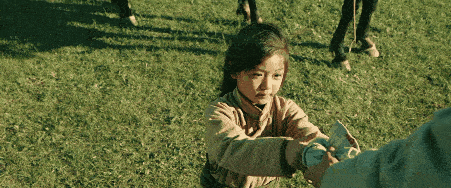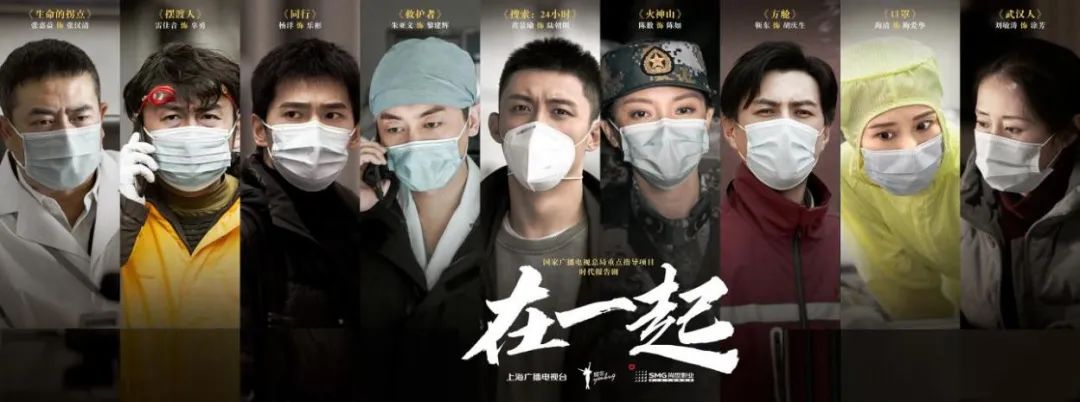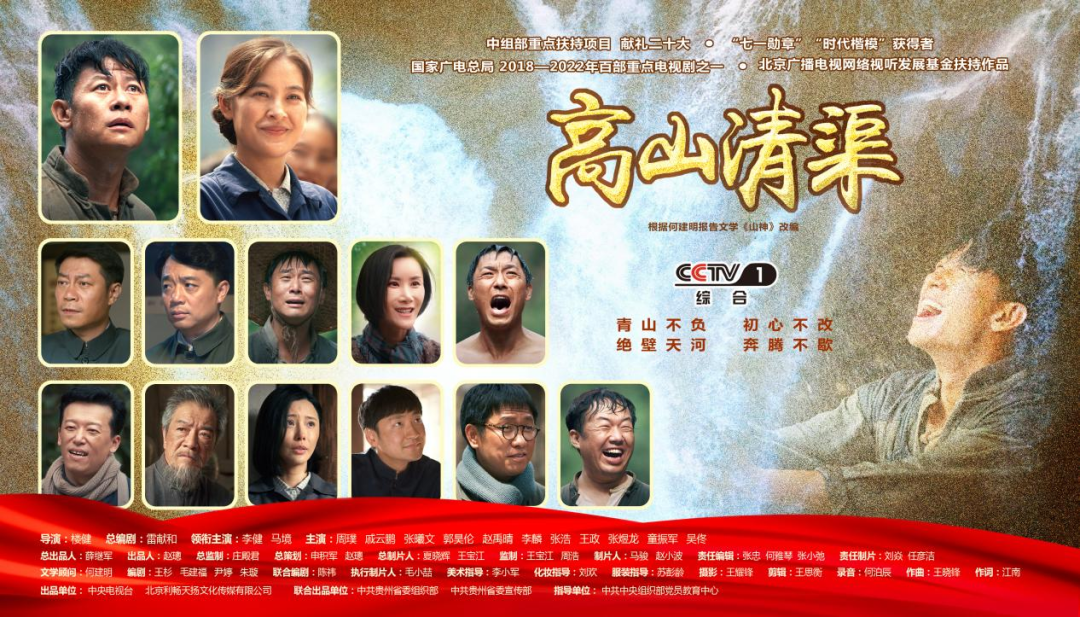"The End of the Sea is the Grassland": the misery sings the tragedy, but the love crosses the mountains and the sea
Author:Media No. 1 Time:2022.09.20
Author | Di Fei
Discrete and stability, entrusting and guardian, trust and commitment.

At the end of the 1950s, New China suffered severe natural disasters, and a large number of orphans southern orphans faced a crisis that could not survive.
At this juncture, the Party Committee and Government of Inner Mongolia Autonomous Region actively asked for help. Nearly 3,000 orphans received the grassland from the nursery in Shanghai, Changzhou and other places. This major decision was turned into a love relay in the vast grassland.

"The End of the Sea is the Grassland" directed by Er Dongsheng is a film with "Three Thousand Orphans into Mongolia" as a historical background.

As the opening film of the Beijing Film Festival, "The End of the Sea is the Grassland" landed on the theater on the Mid -Autumn Festival, which fits the theme of the renovation festival.

Cat eye movie data on September 18
However, as a commercial story that focuses on historical stories and literary colors, it is still worth discussing.
Small incision, vast love
The historical story of "Three Thousands of orphans into Inner Mongolia" is not well known to the public.
Even the director and actor did not know much about this history before that.
After reviewing a large amount of literature, film and television works, and interviewers, the director Er Dongsheng will finally choose to show a vast love behind this history with a tiny incision and some subtle details.

"The End of the Sea is the Grassland" adopts the narrative mode of the road film, which is a small way to allow the audience to follow the perspective of his brother Du Sihan on the way to find a relative. With the deepening layers of the cocoon peeling, the experience of her sister Du Sihuan and the heart of the grassland people's gold are gradually described one by one.
A call, two mothers, three time and space, four turns. It tells a story, and this film is also connected in series.
"One by one, live one, and strong", this is a call that has been emphasized many times in the play, and it is also a sentence that makes many audiences cry.

It is the original purpose of this relay of life across the mountains and sea, and the most direct testimony of the selfless love of the grassland people.
The grassland people responded to the call and used gold -like hearts to connect this group of "national children". The film has such a picture, adheres to the principle of "child nodding", the herdsmen come to the welfare home thousands of miles. They warmly wave their items, shorten the distance from the children, there are precious milk tofu, expensive, and expensive. Camerose, rare small toys, etc., the grassland people can do their best to give the "national children" to the greatest love.

In the narrative process of incorporating highway films, the image of the two mothers was naturally portrayed.
Through the perspective of Shanghai's mother, the historical background of "Three Thousand Orphans Entering Mongolia" clearly explained that the Shanghai mother who was disaster and disaster and the family had to be sent to the welfare home. The opportunity has also become a regret that this mother cannot reconcile her life.

Through the perspective of Mongolian mother, Sa Renna, she also described the magnificent heart of the grassland -the language was not unreasonable, and she took the pen and learned with the teacher. After entering Du Siyi's bowl; her living habits were different, she took her son Namu Khan to set up a housing house and horses; and when Namu Khan was swallowed up by Liu Sand in order to save her sister, she still did not forget in the grief. "We will never never forget. The promise of abandoning you ... In the incomparable love, the grassland mother like Sa Renna, opened the warm mind.

Multi -line narrative techniques are more mature in this film. The three time and space stories advanced at the same time, not giving people a clear sense of jumping.
In the childhood time and space of Du Sihan's perspective, Du Sihuan was sent to the growth time and space from Inner Mongolia, and the time and space of the elderly Du Sihan went to Inner Mongolia. The three different time and space stories were promoted in stories.
What makes the film is more interesting is contradiction and conflict -four turns, which make the overall slower film, with a strong rhythm and highlight.
The four turns were Du Sihan because of her mother and her disease, and finally faced the past, set off in the Inner Mongolia to find relatives, and the story was unfolded from here;

Du Si's stubborn personality and the thoughts of their family are always reluctant to accept the love of new Mongolian families, and the loss of towels given by her mother and the turning of sandstorms are the beginning of her entry to integrate;

Du Sihan's road to find relatives encountered obstacles. When he thought that his sister was no longer in the world, the turning point brought by a call made him seem to feel the tolerance and love of the grassland with his sister;
Du Siyi planned to sneak back from Mongolia to Shanghai, but encountered quicksand on the road, and Mongolian brother Nishu Khan lost her life in order to save her, and she decided to let go of her heart and live on the grassland for Ninmu Khan.

These four turns are the climax of the film, promoting the development of the plot, and also promoting emotional change.
However, due to the limitations of length and other reasons, some characters are portrayed more one -sided, and the plot settings are also very functional. At the same time, many foreshadowing that failed to tell the reason has also become a pity.
Inner Mongolia tour guide encountered when he was looking for relatives, a middle -aged man with a lot of call. The contradiction between him and his brother carried the role of Du Sihan finally sighed: "Nothing is more important than loved ones."
On the way to find relatives, Du Sihan has many times that Du Sihan is passionate about photography, researching the camera, and at the end without electricity. In the end, there was no regret to show the presentation of specific intentions.

But overall, from "The End of the Sea is the Grassland", it undoubtedly successfully showed a vast love with a tiny incision. The main purpose is clear and the rhythm is clear. "Pseudo -Documentary" colorful literary film
The shaking picture in the storm, the low first perspective looked at the stubborn pedestrians, the overall yellow tone, this is the opening of "The End of the Sea", with a documentary style.
This film that comes from the real events of history is indeed trying to develop the style of "pseudo -documentary", and try to make the audience experience real emotions as much as possible.
The first is the details. "The end of the sea is the grassland" in the subtle place, rigorously shaped the living portrait portrait.
In addition to countless Mongolian actors, many actors such as Masu, Ayunga, and Ding Chengxin in the film use Mongolian to perform role interpretations.
During the shooting, Masu lived in the grassland of Inner Mongolia for four months, and followed the herdsmen to learn Mongolian, learn vulgar, and live, so he was as close to nature as possible.
The processing of language details is to maximize the sense of substitution and authenticity to the greatest extent, but because of the use of dialects, there are relatively hard criticisms that appear line dialogue.

The details are also reflected in the finishing touch of the character. The little towel of her sister Du Sihuan is the best confirmation of her stubborn personality, and she has never forgotten the reasonable manifestation of Shanghai.
The Mongolian mother, Sa Renna, gave her daughter with a smile: "The Mongolians respect the fire, so we can't sleep towards the stove with our feet." It not only shows the simple and flat character, but also the meticulous motherly love.
The film did not deliberately create a large -scale emotional ups and downs, but to promote the story and promote emotions through details.
Secondly, the film gives people a majestic emotional power, but it is extremely restrained. A large amount of white language, lens, and soundtrack make the plot lean on life.
It can be seen that the reason is that the language is not available. The Mongolian family and Du Sihuan have few language and expression and movements. At the same time, because of the language barrier, he has relying on Du Sizhen from strange, jealous, to accept and care. Come on. Although emotional transmission is not as straightforward as language, the proper interpretation gives stronger expression and infectious power.
Treatment of lens language -the "large filter" comes with the grassland of Inner Mongolia has innate advantages. A large number of "Tian Cang Cang, the Vast Wild" picture makes people see the vast sea in the grassland, and even see the vast tolerance and love.

"The End of the Sea is the Grassland" with the title of the literary film, which adopts many expression forms of "pseudo -documentary". Although there are weak rhythms and a more monotonous style, the meditation experience makes the theme more prominent, and the emotions are even more emotional. purely.

"Proposition Composition" renovation flower
The historical incident of "Three Thousands of orphans into Inner Mongolia" was not the first time that was put on the screen.
The TV series "Quiet Aimin River" and "National Children" and the film "Geji" and other film and television works are based on this incident.
Faced with this grand historical subject, "The End of the Sea is the Grassland" has also done a similar question to the previous work -too many details and too much history, the theme is easy to "dispersed." Therefore, the lowercase is large, starting from the family and individuals, the cross -order and interpolation of the interruption, showing the best love in this history.

As Director Er Dongsheng said in an interview: "I didn't think too much, I just wanted to present the kindness of true humanity in the most direct and simple way, and let the audience see that although the history has suffering Love to wrap everything. "
In addition to the similar problem, he was newly directed by Er Dongsheng. He boldly put on the actor's casting, letting the combination of the old opera bone and the newcomer of the "electric shock" collided with a spark.
From the perspective of the actor lineup, "The End of the Sea is the Grassland" can be described as a player in "The actor invites the second season". At that time, many actors who had intersection with Er Dongsheng in the show, including Ma Su, Wang Qiang, and Wang Qiang, and Cao Jun, Wang Churan, Ding Chengxin, etc. all joined the play or guest appearances, and were laughed at the audience as "the actor invited to the after -sales version."
Although this cast is risky, it is also a kind of determined attempt. It is a rare opportunity for young actors. hot word.

Just as Ding Chengxin, who participated in the movie for the first time, played a child who was abandoned by his parents in the Shanghai Orphanage in the film. In the interview, he said: "Fortunately, he was invited to participate in the movie by the guidance." Ding Chengxin also worked hard in his interpretation. Find the characteristics of the character and blend with your own personality to make the character more natural.
This is a two -way rush to the actors and the director.
At the same time, Director Er Dongsheng also played a new trick at station B. In June 2021, Er Dongsheng settled in station B and began to release the "Er Dao Vlog" related to the "End of the Sea". The topic of Dongsheng Shopping Hall. It continued until September of this year, and a total of 34 video works were released, and the Internet feels that the start of the filming of the film, the shooting scene, the actor highlights, the front scenes and the back, the crew fun, and many other aspects.
Before watching the movie, from the "Er Dao VLOG", when you can see that Director Er Dongsheng really loves people and things on the land when filming this movie.

Therefore, when "The End of the Sea is the Grassland" finally released the first promotional video, some netizens in station B commented: "The first movie I was produced by station B was broadcast."
This dream linkage that Director Er Dongsheng personally pulled away for a year and a half and the dream linkage with the variety show "The actor please" allows the audience to see more possibilities of theater movie.In "The End of the Sea is the Grassland", No. 1 saw more and more resources and gameplay the possibility of empowerment of the theater movie.When these energy are excavated on the basis of a good script, high -quality works will have more opportunities to be seen and paid.

No. 1 conclusion
As a literary story film that looks back at history, "The End of the Sea is the Grassland" is successful -this story about discrete and stability, entrusting and guarding, trust, and commitment has conveyed a vast love.
However, as a cinema commercial film, the tepid box office seems to have the potential to sing the subject matter.
However, as many film reviews wrote: "Before that, I didn't know the story of" three thousand orphans entered Inner Mongolia ".
This textured literary story film is worth seeing by more people.Just like this history of crossing the mountains and the sea, it will not be forgotten by the times.
- END -
@娱!

The first anti -epidemic report Together will be available on Shandong TV Cultural...
The Beijing -made drama "High Mountains and Clear Dutches" will be broadcast tonight to reproduce the "contemporary Yu Gong" Huang Dafa's deeds

Heroes are the most shiny coordinates of the nation. In order to sing the ordinary...